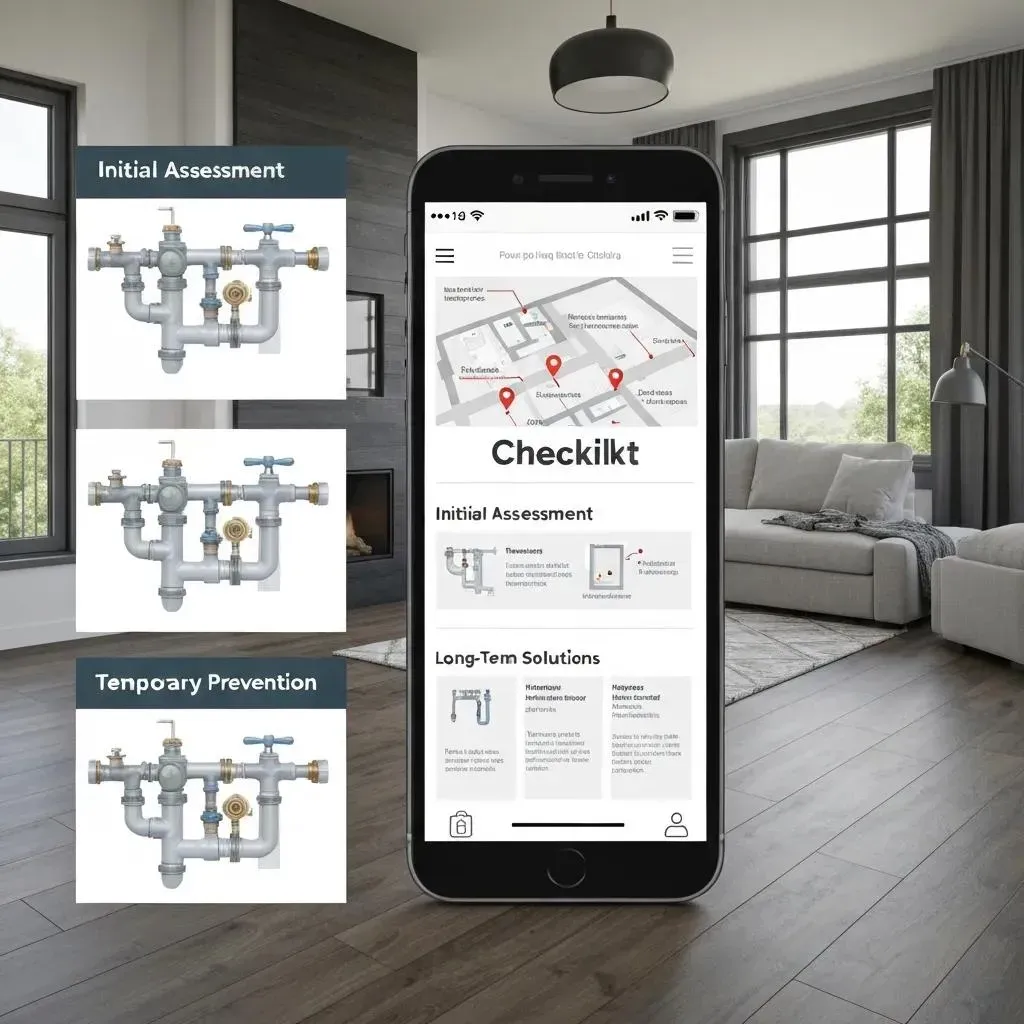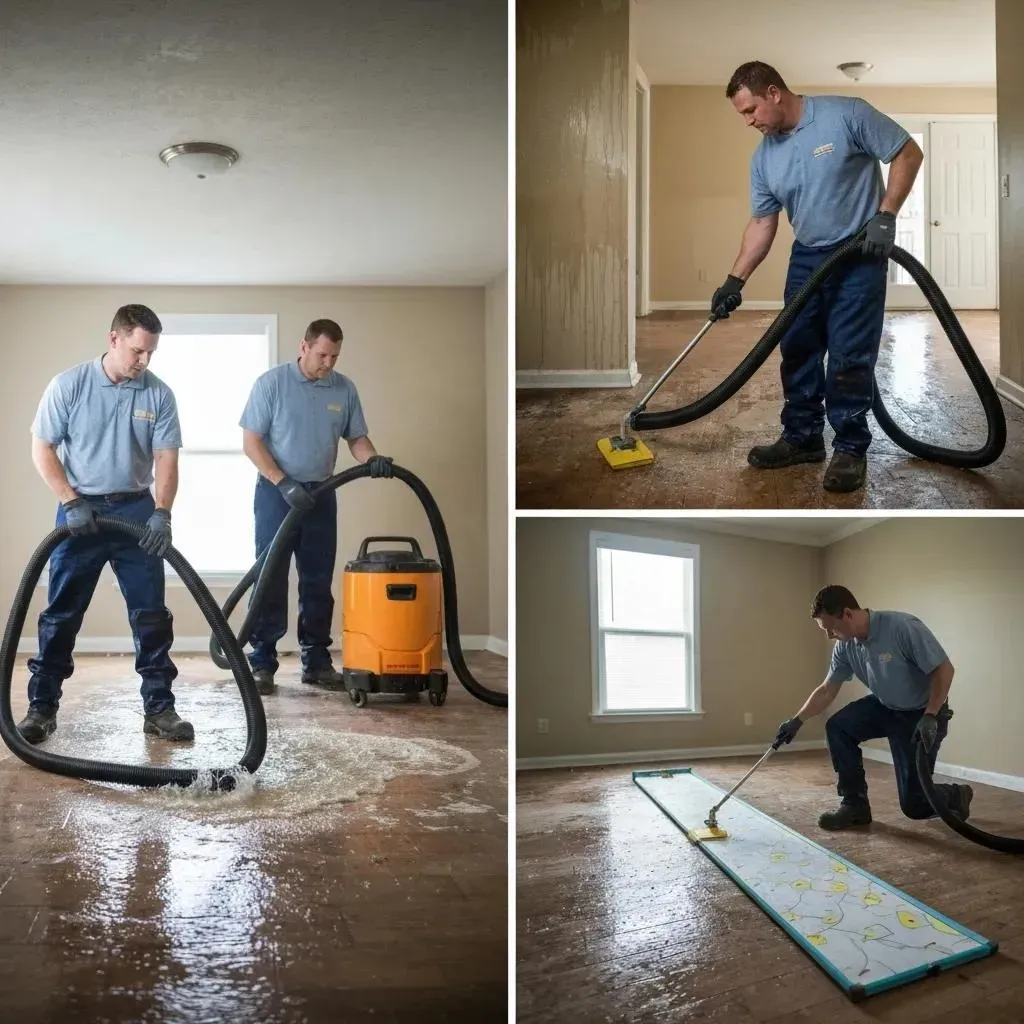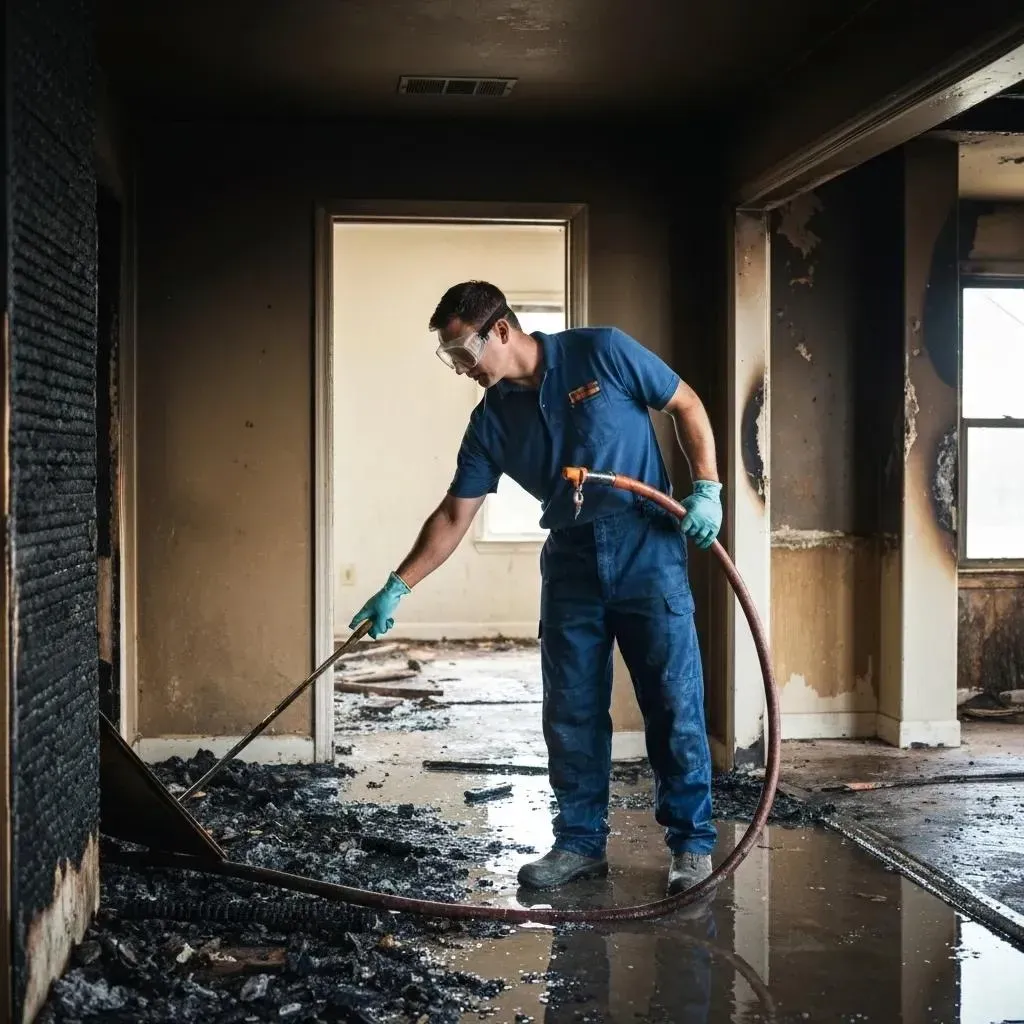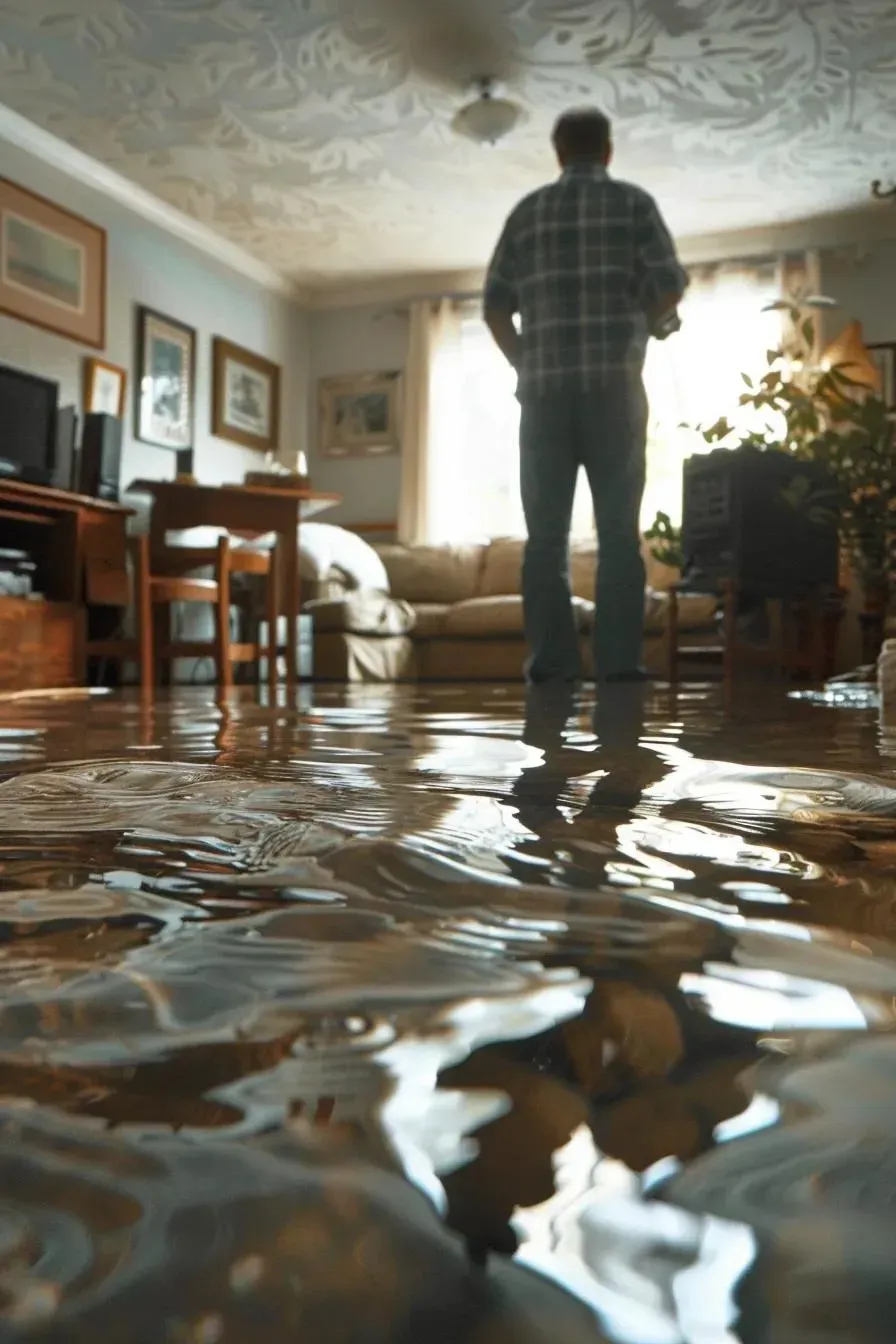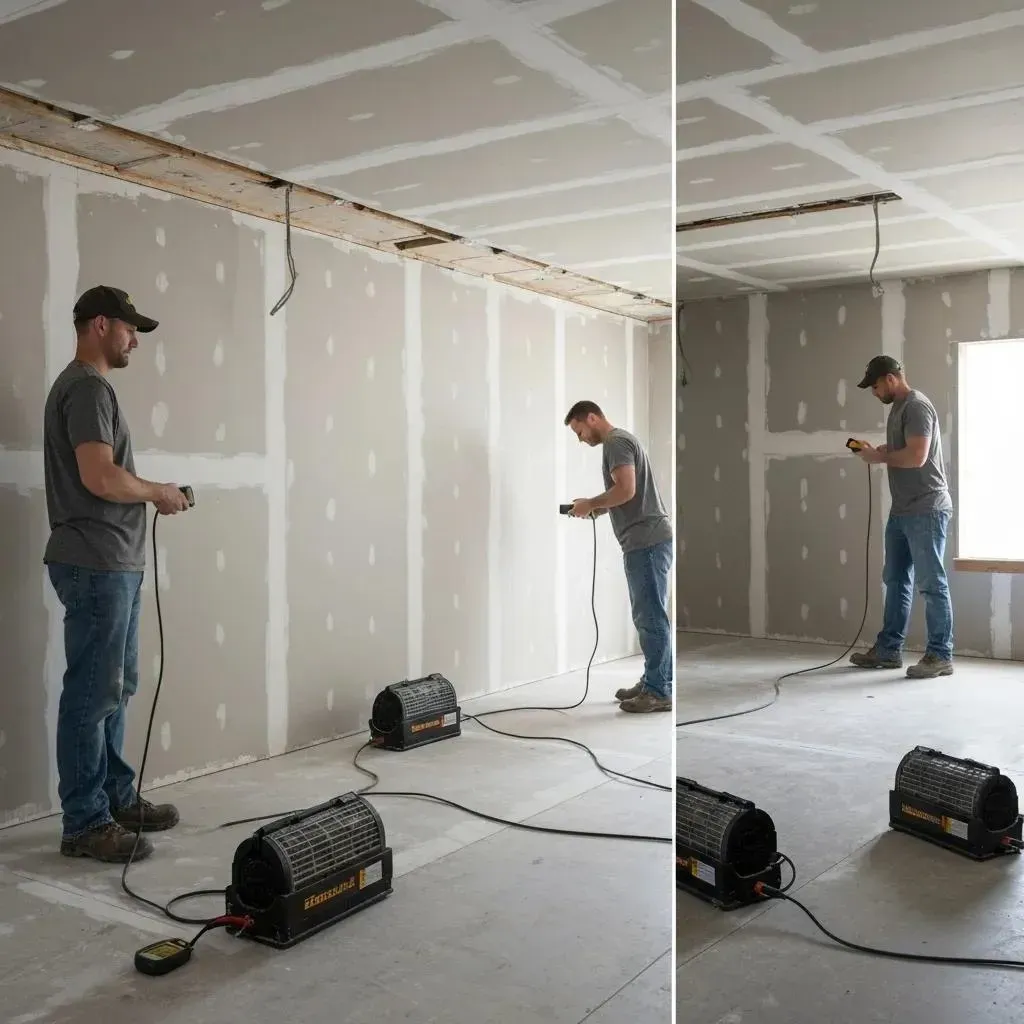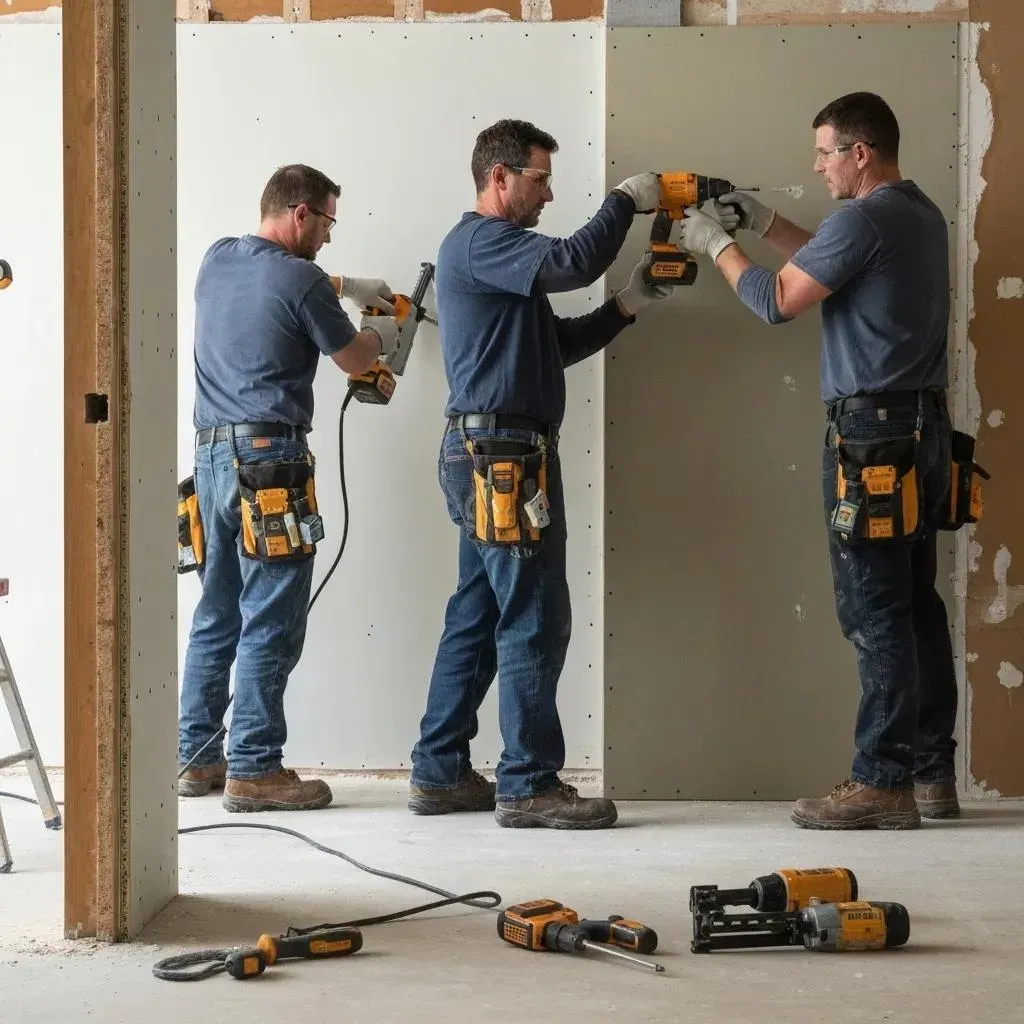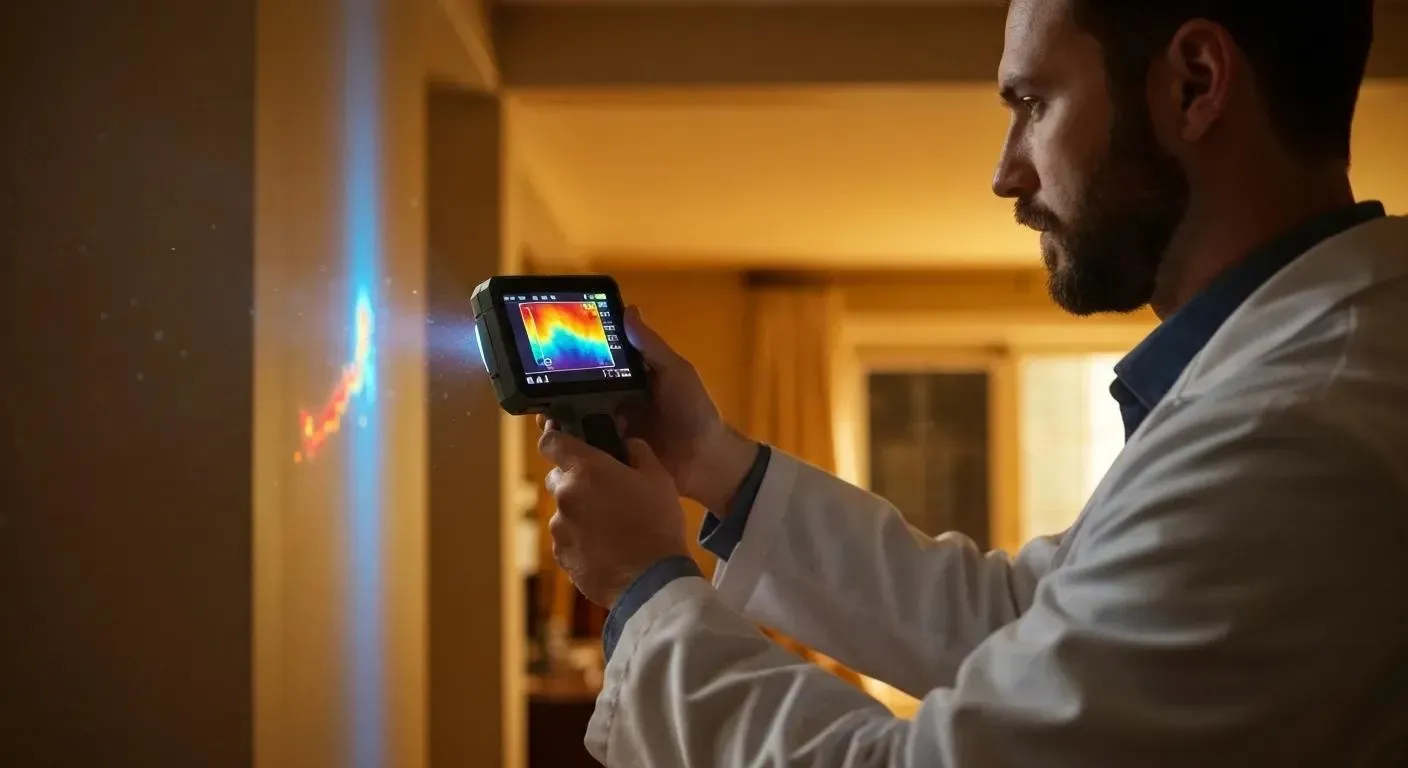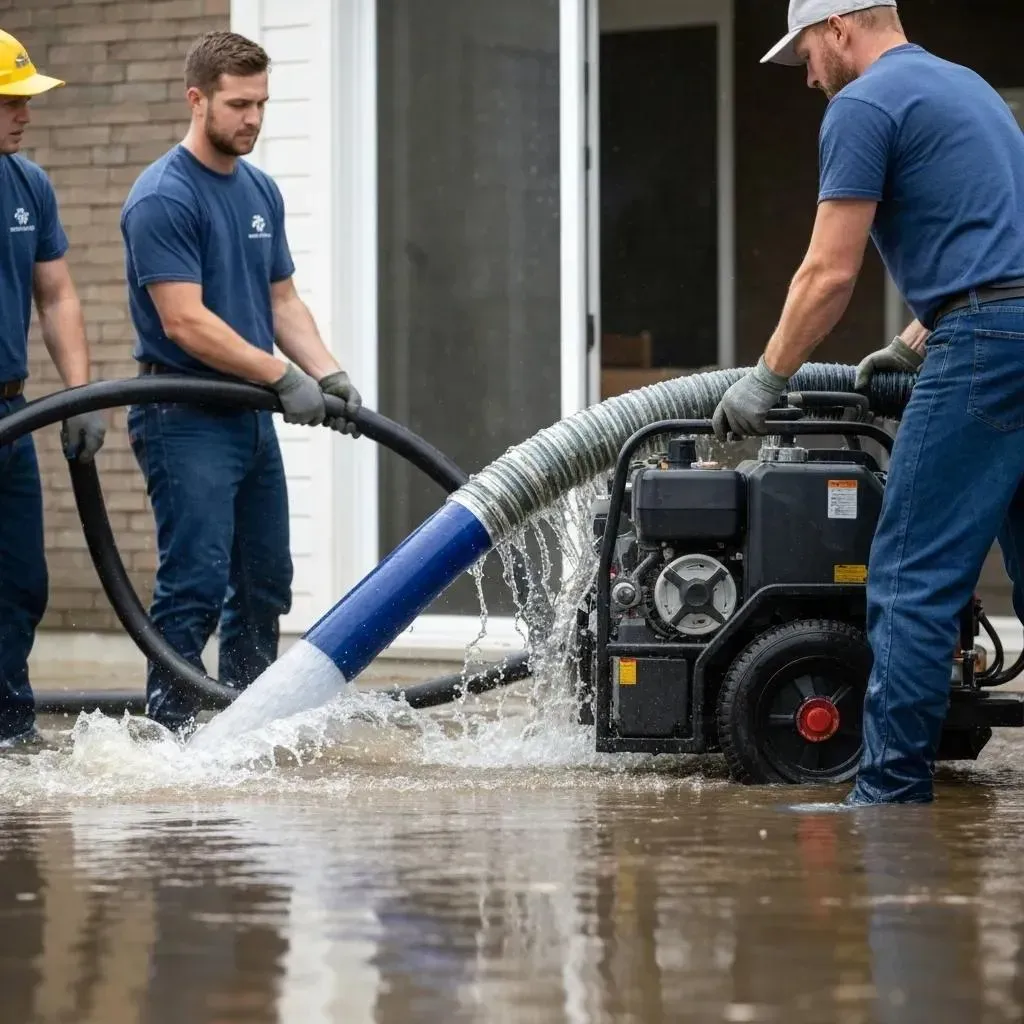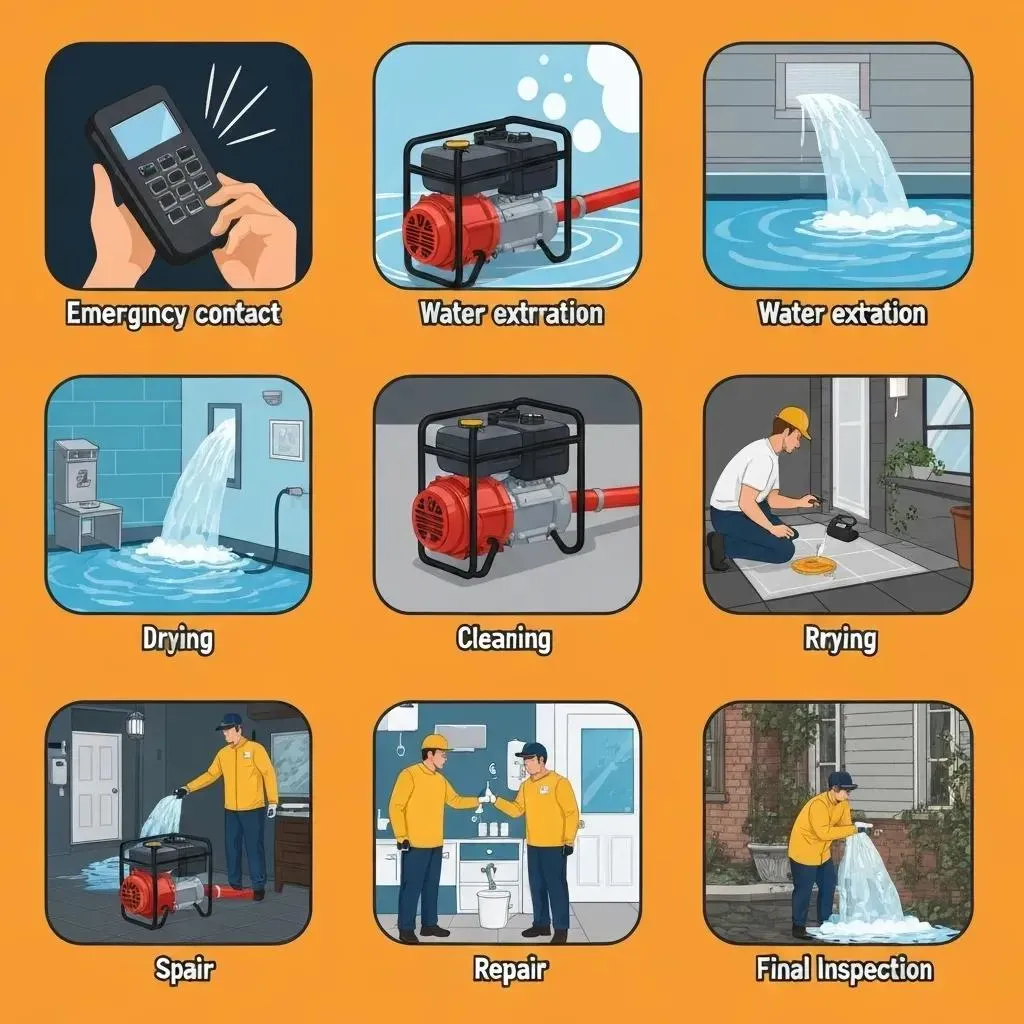Blog
When it comes to asbestos cement pipe disposal, safety is of utmost importance. Here’s a quick guide to address the critical aspects:
- Safety First: Always prioritize safety procedures. Asbestos fibers can pose severe health risks if not handled correctly.
- Proper Disposal: Ensure asbestos materials are disposed of correctly, ideally by certified professionals.
- Regulations Compliance: It’s essential to follow local and federal regulations during the removal and disposal process.
Asbestos cement, often found in older construction, is durable but becomes hazardous when disturbed. Understanding proper safety procedures ensures both your health and the environment stay protected.
I'm Mike Martinez, owner of Accountable Home Services. Our team specializes in asbestos cement pipe disposal and other hazardous materials. We ensure a safe, efficient process compliant with all regulations.

Understanding Asbestos Cement Pipes
Asbestos cement pipes, commonly known as transite pipes, were widely used in the 20th century for their durability and resistance to heat. However, these pipes contain asbestos, a hazardous material that can pose health risks if disturbed.
What’s Inside: Chrysotile and Crocidolite Asbestos
Transite pipes are primarily made with two types of asbestos: chrysotile and crocidolite. Each type has unique properties:
- Chrysotile Asbestos: Also known as "white asbestos," chrysotile is the most common form of asbestos. It has a curly fiber structure and is often used in building materials due to its flexibility and heat resistance.
- Crocidolite Asbestos: Known as "blue asbestos," crocidolite is more rigid and brittle than chrysotile. Its fibers are needle-like, making it more hazardous when inhaled. This type is less common but poses a higher health risk.
Why Were They Used?
The use of asbestos in transite pipes was popular due to its non-conducting and non-combustible properties. These pipes were ideal for venting appliances, water heaters, and furnaces in older buildings. However, as the health risks became clear, the use of asbestos was phased out in the 1970s.
The Risks Today
While undisturbed asbestos cement pipes are generally safe, they become dangerous when damaged. Asbestos fibers can be released into the air, posing serious health risks, including respiratory diseases and cancer.
Key Point: Never attempt to remove or disturb asbestos cement pipes without professional assistance. Always consult with certified contractors to ensure safe handling and disposal.
Understanding the components and risks associated with asbestos cement pipes is crucial for safe management and disposal. This knowledge helps prevent exposure and ensures compliance with safety standards.
In the next section, we'll dive into the key steps for asbestos cement pipe disposal, including guidelines and regulations to follow.
Asbestos Cement Pipe Disposal: Key Steps
Proper disposal of asbestos cement pipes is crucial to ensure safety and compliance with regulations. Here's how to do it right:
Safe Removal Techniques
Removing asbestos cement pipes requires strict adherence to guidelines set by the National Emission Standards for Hazardous Air Pollutants (NESHAP) and Occupational Safety and Health Administration (OSHA). These regulations are designed to minimize the release of asbestos fibers during removal.
Licensed Contractors Only: Always hire licensed professionals for asbestos cement pipe disposal. They have the necessary training and equipment to handle these materials safely.
Wet Work Procedures: This technique involves keeping the asbestos-containing materials damp during removal to prevent fibers from becoming airborne. It's a critical step in reducing exposure risks.
Protective Equipment: Workers must wear protective clothing and respirators. This gear is essential to protect against inhaling dangerous asbestos fibers.
Proper Handling and Transportation
Once the pipes are safely removed, they must be handled and transported with care:
Containment: Asbestos-containing waste materials (ACWM) should be sealed in leak-tight containers. Double-bagging in heavy-duty plastic is a common practice to ensure containment.
Licensed Landfill: Transport the contained waste to a licensed landfill that is approved to handle asbestos materials. Not all landfills can accept ACWM, so it's important to verify this beforehand.
Regulated Disposal: Follow all local and federal regulations when disposing of asbestos. This includes proper labeling and documentation to track the waste from removal to disposal.
By following these key steps, you can ensure that asbestos cement pipes are disposed of safely and in compliance with all regulatory requirements. This protects both the environment and public health from the dangers of asbestos exposure.
In the following section, we'll explore the health and safety considerations associated with asbestos cement pipe disposal, including air monitoring and exposure limits.
Health and Safety Considerations
When dealing with asbestos cement pipe disposal, understanding health and safety considerations is key. This includes air monitoring, exposure limits, and protective measures to safeguard everyone involved.
Air Monitoring
Air monitoring is essential during the removal and disposal of asbestos cement pipes. It helps ensure that asbestos fibers do not become airborne, posing a risk to workers and the surrounding community. The process involves collecting air samples both inside and outside the regulated area to detect any fiber release.
- Inside the Regulated Area: Collecting samples here ensures that the immediate work environment remains safe.
- Upwind and Downwind: Sampling in these areas helps identify if fibers are spreading beyond the worksite.
Licensed asbestos consultants often determine the need for additional samples and adjust the health and safety plans accordingly. This proactive approach helps maintain a safe environment.
Exposure Limits
Exposure to asbestos fibers can lead to serious health issues, including respiratory diseases and cancer. Therefore, strict exposure limits are set by regulatory bodies like OSHA to protect workers. The Permissible Exposure Limit (PEL) is a critical threshold that must not be exceeded during asbestos work.
- Regular Monitoring: Continuous air monitoring ensures that fiber concentrations remain below the PEL.
- Immediate Action: If levels exceed the safe limits, immediate corrective measures must be taken to reduce exposure.
Protective Measures
Implementing protective measures is crucial in minimizing asbestos exposure during handling and disposal activities.
- Protective Equipment: Workers must wear appropriate personal protective equipment (PPE), including respirators and disposable coveralls. This gear acts as a barrier against fiber inhalation and skin contact.
- Wet Work Procedures: Keeping asbestos-containing materials damp during removal prevents fibers from becoming airborne, reducing the risk of exposure.
- Controlled Access: Only authorized personnel should enter the regulated area, minimizing the risk to untrained individuals.
By prioritizing air monitoring, adhering to exposure limits, and enforcing protective measures, the risks associated with asbestos cement pipe disposal can be effectively managed. These steps not only protect workers but also ensure compliance with health and safety regulations.
Up next, we'll answer some frequently asked questions about asbestos cement pipe disposal, including how to get rid of asbestos pipes and what to do with them once they're removed.
Frequently Asked Questions about Asbestos Cement Pipe Disposal
How do you get rid of asbestos pipes?
Disposing of asbestos pipes requires careful adherence to safety and regulatory guidelines. Asbestos cement pipes are classified as Category II nonfriable materials, meaning they don't easily release fibers unless disturbed. However, they must still be handled with care.
To properly dispose of these pipes:
- Engage Licensed Contractors: Only qualified professionals should handle asbestos removal. They are trained to minimize fiber release and are familiar with regulations.
- Use Approved Landfills: Asbestos waste must be transported to a landfill that is approved to accept such materials. These facilities are equipped to safely contain asbestos waste, preventing environmental contamination.
- Documentation: Ensure you have the necessary permits and documentation for transportation and disposal. This paperwork is critical for regulatory compliance.
What to do with asbestos pipe?
Once you have removed asbestos pipes, proper handling and containment are essential to prevent exposure and contamination.
- Asbestos Waste Containers: Place the pipes in sealed, leak-proof containers lined with polyethylene. This minimizes the risk of asbestos fibers escaping during transport.
- Avoid Crushing: Handle the pipes gently to avoid breaking them. Crushing or breaking can release hazardous fibers into the air, increasing the risk of exposure.
- Labeling: Clearly label containers to indicate they contain asbestos waste. This is crucial for safety during transportation and disposal.
Is asbestos cement water pipe safe?
Asbestos cement water pipes, when intact and undisturbed, do not pose an immediate health risk. The danger arises when the pipes are damaged, releasing asbestos fibers into the air. These fibers can cause serious health issues if inhaled.
- Safety Standards: Regulatory bodies have established safety standards to manage and monitor the use of asbestos-containing materials. These standards ensure that the risk of exposure is minimized.
- Regular Inspections: Regular inspections of asbestos cement water pipes can help identify any potential risks. If a pipe is damaged, it's important to take immediate action to prevent fiber release.
By following these guidelines and maintaining vigilance, the risks associated with asbestos cement pipes can be effectively managed, ensuring safety for both workers and the community.
Conclusion
At Accountable Home Services, we understand the complexities and risks associated with asbestos cement pipe disposal. Our team of certified professionals is dedicated to providing safe and reliable solutions custom to your needs. With our expertise, you can trust that the disposal process will be handled with the utmost care and precision.
Professional Expertise
Our technicians are not only trained in the latest safety protocols but also equipped with state-of-the-art tools to ensure thorough asbestos removal. We adhere to strict safety standards, ensuring that every project is completed efficiently and safely. By choosing us, you benefit from our deep understanding of regulatory requirements, which helps avoid any compliance issues.
Reliable Solutions
We pride ourselves on offering comprehensive and reliable solutions that protect both your home and health. From initial consultation to final disposal, we manage every step with transparency and professionalism. Our approach is designed to minimize stress and ensure peace of mind, knowing that your asbestos concerns are being addressed by experts.
Your Trusted Partner
As a family-owned business in the Denver Metro Area, we are committed to serving our community with integrity and excellence. Whether you're dealing with asbestos, water, fire, or mold, Accountable Home Services is your go-to partner for restoration and remodeling needs. We offer 24/7 emergency response and direct insurance billing to make the process as smooth as possible.
For more information on our asbestos removal services and how we can help you, visit our Asbestos Removal page.
Together, let's ensure your home is safe and sound.

